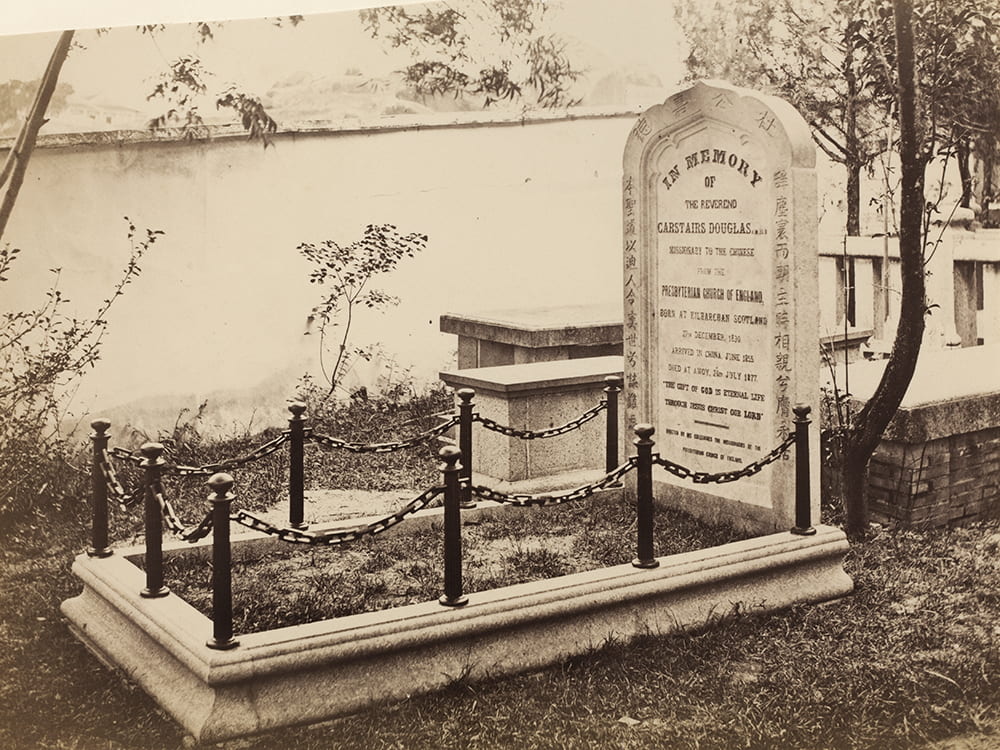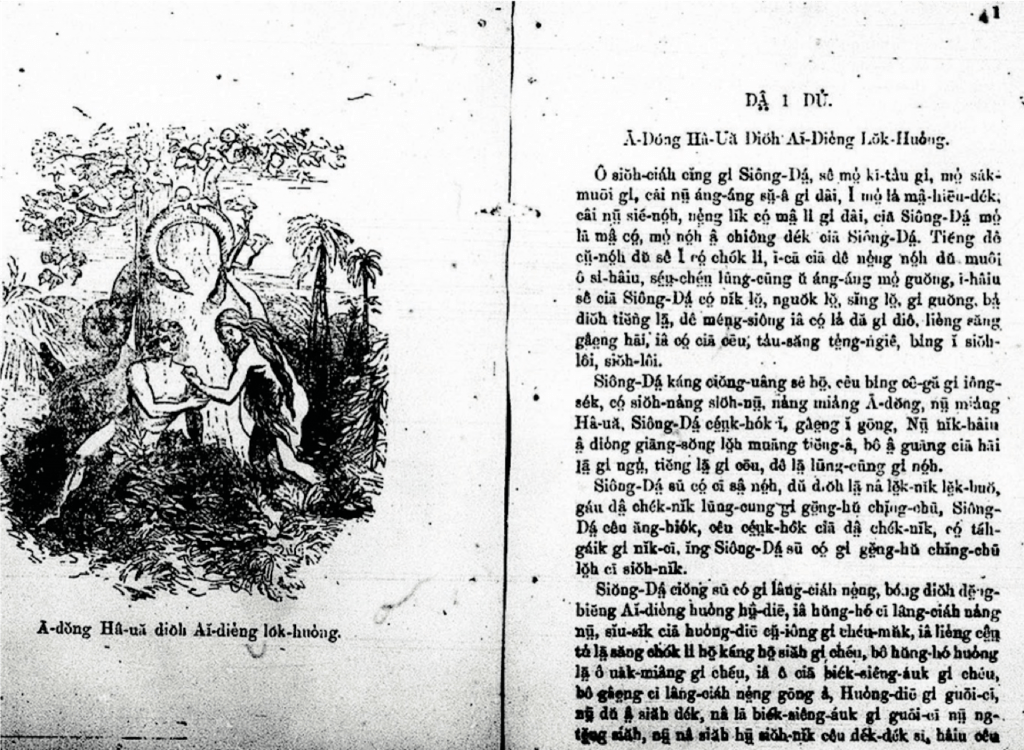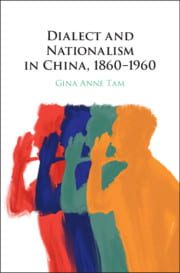Our latest guest blogger is Gina Anne Tam. An assistant professor of Chinese history at Trinity University in San Antonio, Texas, Gina’s research and teaching interests include the history of nationalism, race and ethnicity, language, and foodways. She received her BA in history and Asian Studies from the Indiana University of Pennsylvania, and her Ph.D. in history from Stanford University. Her first book, Dialect and Nationalism in China 1860-1960, is published by Cambridge University Press.

The grave of Carstairs Douglas, missionary and linguist, Gulangyu, Xiamen, c1877-1880. HPC ref: Mx01-100.
This photograph shows the grave of Scottish missionary Carstairs Douglas in the port city of Xiamen (Amoy), where he lived for nearly twenty years until his death in 1877. Among his many legacies—remembered, of course, as a pioneer, church leader—was his expansive and comprehensive Chinese-English Dictionary of what he calls the ‘Vernacular or Spoken Language of Amoy.’ Douglas’s massive tome, with hundreds of pages and thousands of entries, has stood the test of time, continuing to serve as a foundational text in the study of Chinese phonology even to this day.
Douglas was one of many missionaries from Europe and the United States who took advantage of the assertion of foreign power in East Asia after the first Opium War to travel to Qing China, and one of many who used his spare time between evangelical activities to study, analyze, and write about language. These men were instrumental in the invention of a China for the Western imagination—a imagined construct fabricated to adhere to a European and American worldview. Without what felt like a full picture of China before them, these sojourners filtered the fragmented information they collected through the lens of their own histories, making sense of what they saw by inserting it into streamlined narratives of historical progress modeled on the European experience. Nowhere is this process clearer than in European narratives about the Chinese language. It simply made sense to these men to equate the China’s literary language to Latin, its local languages (called fangyan in Chinese) to dialects, and the language of officials to a so-called ‘Chinese language’ that would, were China to modernize and become a modern nation, serve as its lingua franca.

Adam and Eve: Book of Genesis in Fuzhou dialect. Source: Seng ging du siok kie mung (Sheng jing tu shuo qi meng) (n.p., 1890)
But not to Douglas. One of the ways that he was unique among his peers was that he was one of the few to starkly acknowledge just how inadequate these metaphors were and how misleading the process of translation could be. He wrote the following in the introduction to his dictionary in regard to the spoken language of Xiamen:
Such words as “dialect” or “colloquial” give an erroneous conception of its nature. It is not a mere colloquial dialect or patois; it is spoken by the highest ranks just as by the common people, by the most learned just as by the most ignorant . . . Nor does the term “dialect” convey anything like a correct idea of its distinctive character; it is no mere dialectical variety of some other language; it is a distinct language, one of the many and widely different languages which divide among them the soil of China.
Douglas’s criticism highlights the inherent associations attached to each English term. The term ‘dialect,’ he claimed, implied a branch or auxiliary, a category or entity only made comprehensible through its relationship to its root language. It also implied mutual intelligibility, which could not be claimed of the local languages of Fujian, where Douglas was stationed, and Guangdong, Shanghai, or Beijing. Ultimately, Douglas recognized that terms like ‘dialect’ emerged from a historically contingent experience, and that by applying these terms to phenomena born of a different context, he was creating an imperfect metaphor that had the potential to mislead.

Lin Yutang in Sao Paolo, 1959, unknown photographer, Governo do Estado de São Paulo-
Arquivo Público do Estado de São Paulo
Several decades later, another language enthusiast, Lin Yutang, would make precisely the opposite argument about China’s fangyan. Lin spent much of his early adulthood abroad, first at the United States at Harvard, and then France and finally Germany, where he completed his doctorate in philology at the University of Leizpig. When he returned to China, he became a strident defender of the linguistic methodologies he absorbed in his training. In 1925, Lin wrote an excoriation of his colleagues’ insistence that the term fangyan, a word with a long history in Chinese literature stretching back millennia, referred simply to “languages spoken in a particular place” and nothing more. Lin chided:
There should be no confusion as to the definition of fangyan. The world’s languages are connected in one system, called a yuyanxi [family of languages]. Language families are then divided into yuyan [languages], and within each language there are divisions of fangyan [dialects]…We ought to declare that when we speak of fangyan today that we are using it [with the] meaning from modern linguistics.
Here, Lin insisted that his colleagues adhere to frameworks established by linguists in Europe and the United States. From his perspective, these categories were determined by science and science was not culturally contingent. Ultimately, Lin’s sought to include Chinese knowledge in a global scientific epistemology, which demanded an adherence to the categories it had prescribed.
 My book, Dialect and Nationalism in China, 1860-1960, explores Chinese nation-building by tracing shifting discourses on fangyan. This history is, in part, a history of translation. The history of how fangyan became equated with the English term dialect reveals how the process of nation-building compelled Chinese reformers at the end of the Qing dynasty to imagine a nation with a singular language—a characterization that we, today, frequently presume to be objective truth. The prescribed “need” for a singular Chinese language was first articulated by Douglas’s peers from Europe and America, who pronounced China “backwards” due to its lack of linguistic unity. But by the turn of the twentieth century, it had become the centerpiece of China’s national conception among Chinese reformers and revolutionaries. And once these reformers had deemed a national language necessary for national genesis, everything else had to be reframed as something other than a national language; dialects, with their connotations of subordination, felt like a natural fit. And once such designations had been deemed necessary for national modernity, linguists like Lin Yutang reframed categories like language and dialect as scientific, objective fact, not human constructions. Ultimately, their work masked the fact that translation is a product of creation—creations imbued with political interests and human biases.
My book, Dialect and Nationalism in China, 1860-1960, explores Chinese nation-building by tracing shifting discourses on fangyan. This history is, in part, a history of translation. The history of how fangyan became equated with the English term dialect reveals how the process of nation-building compelled Chinese reformers at the end of the Qing dynasty to imagine a nation with a singular language—a characterization that we, today, frequently presume to be objective truth. The prescribed “need” for a singular Chinese language was first articulated by Douglas’s peers from Europe and America, who pronounced China “backwards” due to its lack of linguistic unity. But by the turn of the twentieth century, it had become the centerpiece of China’s national conception among Chinese reformers and revolutionaries. And once these reformers had deemed a national language necessary for national genesis, everything else had to be reframed as something other than a national language; dialects, with their connotations of subordination, felt like a natural fit. And once such designations had been deemed necessary for national modernity, linguists like Lin Yutang reframed categories like language and dialect as scientific, objective fact, not human constructions. Ultimately, their work masked the fact that translation is a product of creation—creations imbued with political interests and human biases.
By unpacking the process by which fangyan became twinned with ‘dialect,’ we can see firsthand how the translation was born out of the political needs of the moment of its creation. It was, in other words, not a neutral pairing, but a deeply fraught innovation with wide-ranging implications. And, as my book shows, this translation and the framework it upheld always had detractors. Lin and Douglas were not necessarily representative of their time or place: there were Western observers who uncritically found dialect a proper framework for understanding fangyan, and Chinese folklorists, authors, and scholars who were suspicious of Lin’s hierarchical taxonomical model which indirectly upheld northern Mandarin as more significant than other Chinese languages. These stories are important for understanding the vicissitudes of the relationship between language and identity, too.
While Douglas may be remembered for any number of achievements, to me, his legacy was his prescient recognition that categories born of a European experience might not fit neatly onto China’s linguistic landscape as the tombstone in the photograph ill-fits China’s deathscape. He highlights how the pairing of fangyan to the term dialect was one of creation, and how the translations we choose have implicate our lived realities.
